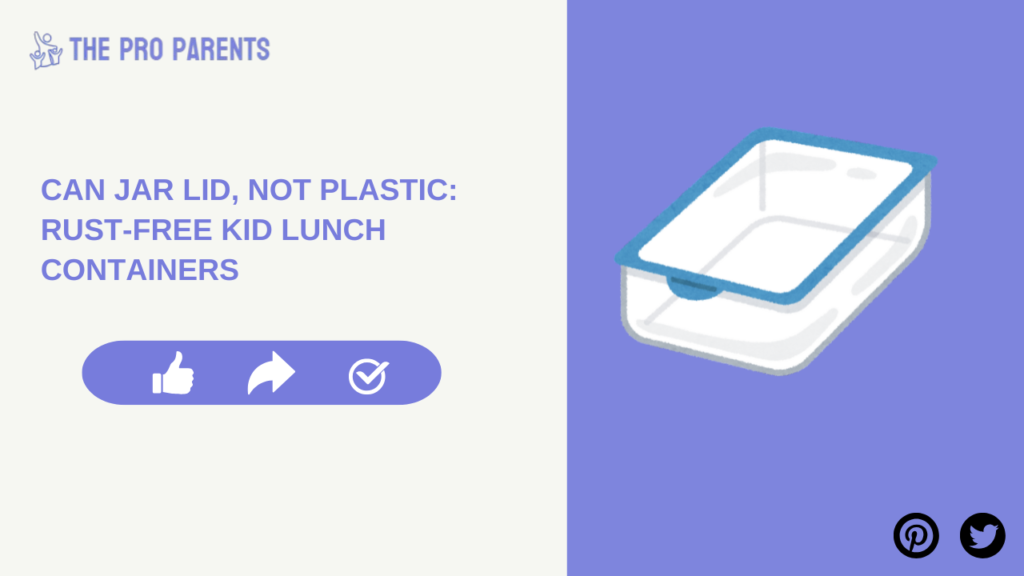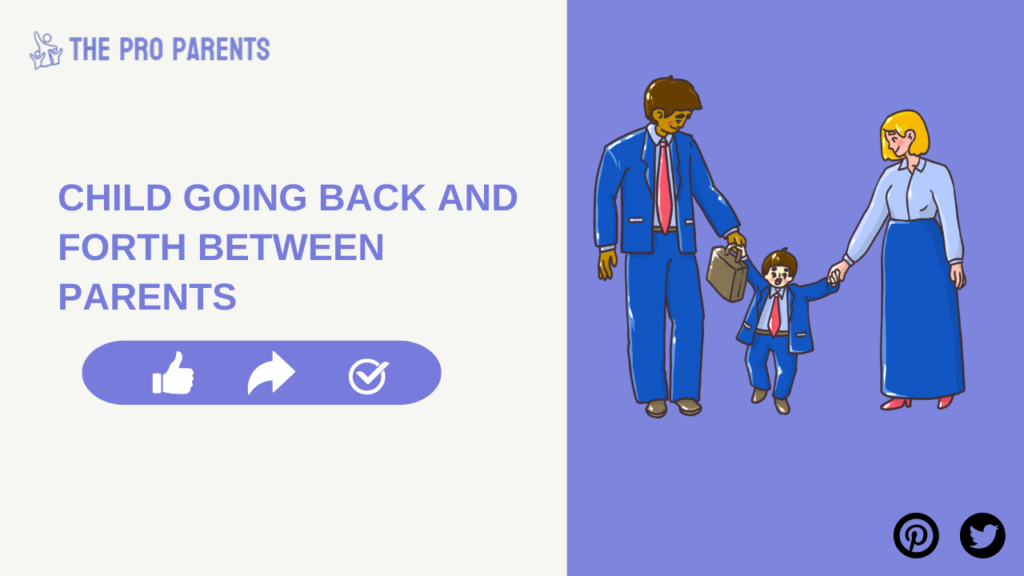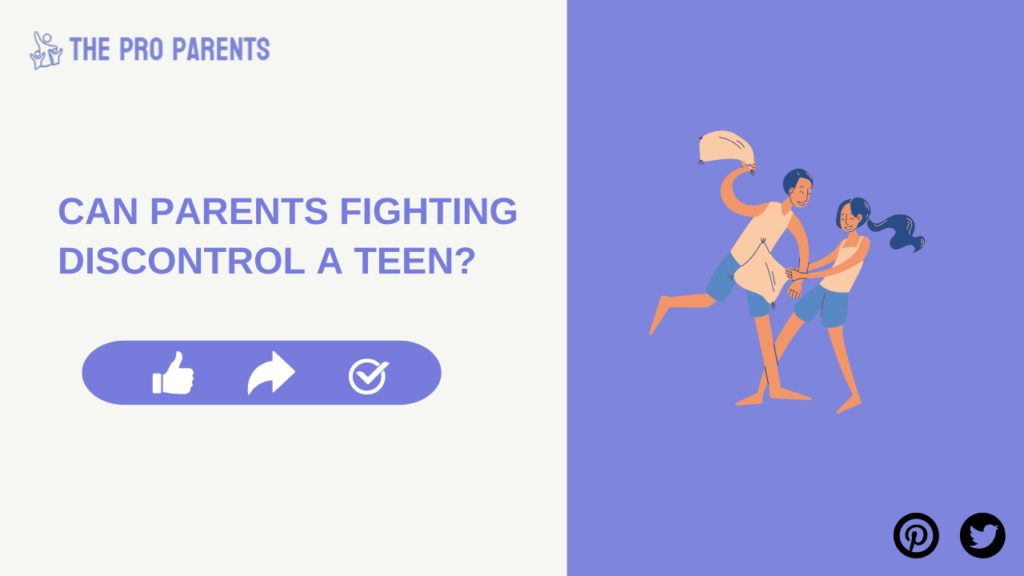When it comes to packing lunch for your little ones, many parents are shifting away from harmful plastic containers. Can jar lid, not plastic rust-free kid lunch containers are becoming the go-to solution for eco-conscious families. These containers are rust-free, non-toxic, and offer a healthier alternative to traditional plastic lunchboxes. Not only are these containers better for your child’s health, but they also help reduce the environmental impact caused by plastic waste.
Table of Contents
In this guide, we’ll delve into why can jar lid not plastic rust-free kid lunch containers are essential, explore their many benefits, and recommend the best products available for your child’s lunch needs.
Why Choose Rust-Free, Non-Plastic Containers for Your Child’s Lunch?

Traditional plastic lunchboxes and containers have long been a staple for packing children’s lunches, but they come with significant downsides. Many plastic containers contain chemicals like BPA (bisphenol A), which can leach into food, especially when exposed to heat. This chemical is linked to various health problems, including hormone disruption and developmental issues in children.
Choosing a can jar lid, not plastic rust-free kid lunch containers, such as those made from stainless steel or glass, eliminates these concerns entirely. These materials are free from harmful chemicals and are much safer for storing food.
Benefits of Rust-Free, Non-Toxic Lunch Boxes for Kids
Opting for a rust-free, non-plastic lunch box is beneficial for several reasons:
- Healthier: These containers are free from harmful chemicals like BPA, making them safer for kids.
- Durable: Stainless steel and glass are more durable than plastic, meaning these containers will last longer, saving money in the long run.
- Eco-Friendly: These materials are recyclable and reduce plastic waste, contributing to a greener environment.
- Better Food Preservation: Rust-free, non-plastic containers keep food fresh without imparting any unwanted chemicals or tastes.
With so many advantages, it’s clear why parents are moving towards can jar lid, not plastic rust-free kid lunch containers.
Top Features of the Best Rust-Free Kid Lunch Containers
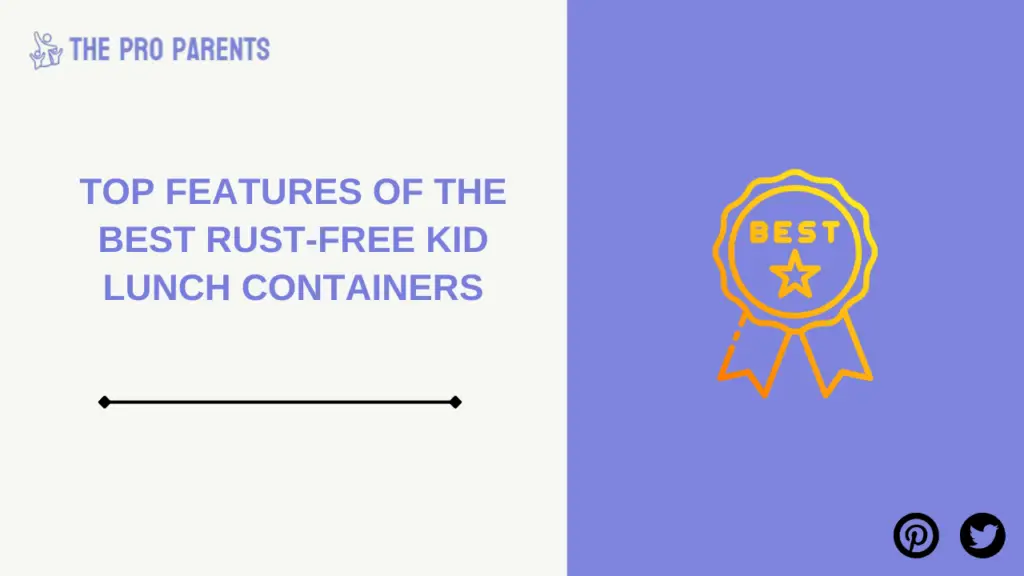
Eco-Friendly and Sustainable Materials
When it comes to eco-friendly lunchboxes, materials like stainless steel, glass, and bamboo are ideal. These materials are not only safe but also highly sustainable, contributing to a plastic-free lifestyle. Stainless steel, for example, is rust-resistant and incredibly durable, ensuring that your child’s lunchbox can withstand rough handling. Glass containers, like those from Wean Green, are non-toxic, microwave-safe, and perfect for storing meals without worrying about harmful chemicals leaching into food.
Kid-Friendly and Safe Designs
The best can jar lid, not plastic rust-free kid lunch containers come with features that make them easy and safe for kids to use. Look for lunchboxes with child-proof lids, leak-proof compartments, and colorful designs to make lunchtime exciting. Many stainless steel and glass containers are also lightweight, making them perfect for younger children to carry around.
Top 5 Rust-Free, Non-Plastic Kid Lunch Containers You Should Try
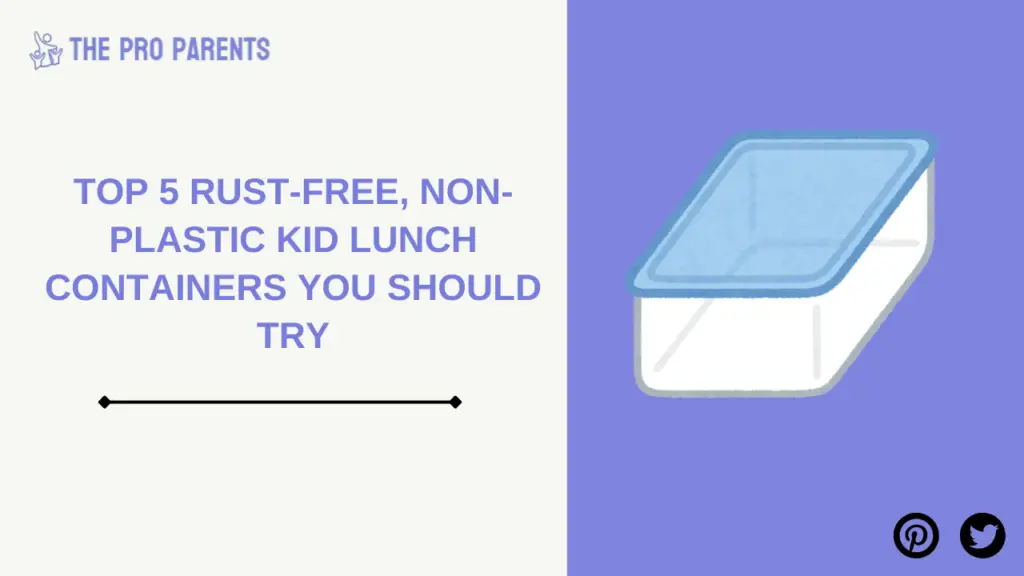
1. Stainless Steel Lunchboxes: PlanetBox Rover
PlanetBox is a popular brand known for its eco-friendly lunchboxes. The PlanetBox Rover is a high-quality, durable lunchbox made from stainless steel. It comes with multiple compartments to pack a variety of foods, and the can jar lid not plastic rust-free kid lunch design ensures your child’s food remains safe and free from harmful chemicals. The leak-proof lids prevent spills, making it the perfect solution for sending lunches to school.
2. Glass Lunch Containers: Wean Green Cubes
Wean Green Cubes are another great option for can jar lid not plastic rust-free kid lunch containers. These glass containers come with tight-sealing lids, making them ideal for keeping food fresh and secure. Glass is non-toxic and won’t leach chemicals into food, which is essential for kids’ health. Additionally, these containers are microwave-safe and easy to clean, ensuring hassle-free use for busy parents.
3. Bamboo Fiber Lunch Containers: EcoLunchbox Three-in-One
For those looking for a sustainable option, the EcoLunchbox Three-in-One made from bamboo fiber is an excellent choice. This lunchbox is lightweight, durable, and free from plastic, making it a great option for eco-conscious families. The can jar lid not plastic rust-free kid lunch feature ensures that food is safe, and the box is dishwasher safe for easy cleaning.
4. Stainless Steel Containers: LunchBots Trio
LunchBots Trio is a stainless steel container with three separate compartments, ideal for packing a balanced meal. These containers are rust-free, non-toxic, and come with leak-proof lids to keep your child’s food fresh. They’re also easy to carry, making them perfect for school lunches.
5. Glass Containers: Pyrex Simply Store
For Pro Parents who prefer glass over plastic, Pyrex Simply Store containers are a top choice. These containers are known for their durability, ease of use, and rust-free design. With their tight-fitting lids and variety of sizes, they provide the perfect storage solution for a can jar lid not plastic rust-free kid lunch.
How to Care for Rust-Free, Non-Plastic Lunch Containers
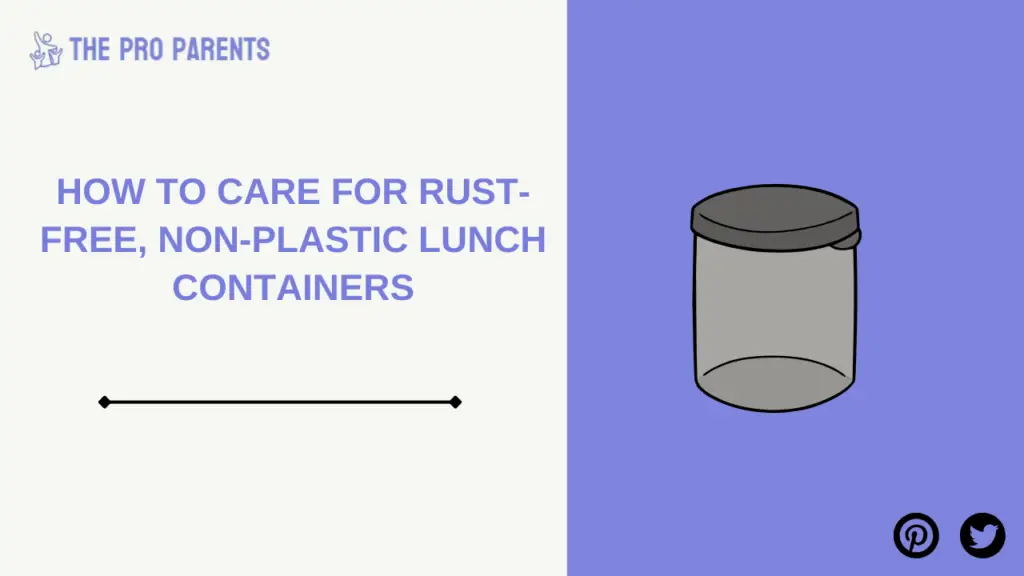
To ensure your can jar lid not plastic rust-free kid lunch containers last for years, it’s important to clean and maintain them properly.
Tips for Proper Cleaning and Maintenance
- Hand Wash Regularly: While some lunch containers are dishwasher-safe, hand washing is often the best way to preserve the integrity of the materials.
- Avoid Harsh Chemicals: Use mild soap and warm water to clean your containers. Harsh cleaning agents can damage the surface.
- Dry Immediately: After washing, dry your lunch containers immediately to prevent any rusting or residue buildup.
Best Storage Practices
Store your lunch containers in a dry place, away from direct sunlight or heat. Stainless steel and glass containers should be kept in a cool, dry environment to prevent rusting.
How to Transition to a Plastic-Free Lunchbox for Your Kids
Switching from plastic to a rust-free, non-plastic container might seem daunting, but it’s easier than you think. Here’s how to make the transition:
- Start Small: If your child is used to plastic containers, begin by introducing smaller can jar lid not plastic rust-free kid lunch containers for snacks or drinks.
- Involve Your Child: Let your child pick their favorite lunchbox design. This will get them excited about using it and help the transition go smoothly.
- Educate Your Kids: Teach your child about the benefits of using eco-friendly lunchboxes, such as protecting the environment and staying healthy.
Conclusion: Choose a Rust-Free, Non-Plastic Lunchbox for Your Child’s Health and the Planet
In conclusion, opting for a can jar lid not plastic rust-free kid lunch container is a smart choice for both your child’s health and the environment. These containers are durable, eco-friendly, and safe, offering peace of mind for parents who want the best for their children. By switching to non-plastic, rust-free lunchboxes, you’re making a positive impact on your child’s health and helping reduce plastic waste.
Frequently Asked Questions (FAQ)
How to prevent jar lids from rusting?
To prevent jar lids from rusting, store them in a dry place, keep them clean and dry after use, and avoid exposing them to excessive moisture or humidity.
Do ball mason jar lids rust?
Yes, Ball mason jar lids can rust over time, especially if exposed to moisture. It’s essential to dry them thoroughly after washing to prevent rusting.
Why are my mason jar lids rusting?
Mason jar lids rust due to prolonged exposure to moisture or humidity. Cleaning and drying them after use and storing them properly can help prevent rust.
What are jar lids made of?
Jar lids are typically made from steel, sometimes coated with tin or a rust-resistant material to prevent corrosion and ensure a secure seal.
How do you get rust off jar lids?
To remove rust from jar lids, soak them in vinegar or baking soda solution, scrub with a brush, then rinse and dry thoroughly to prevent further rusting.
